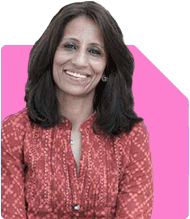Ramalingam Kalirajan |10894 Answers |Ask -Follow
Mutual Funds, Financial Planning Expert - Answered on Apr 15, 2024
He has an MBA in finance from the University of Madras and is a certified financial planner.
He is the director and chief financial planner at Holistic Investment, a Chennai-based firm that offers financial planning and wealth management advice.... more

Hi, I am 25 years old working in a MNC. Earning arround 65k excluding taxes in Bangalore + some shift, yearly bonus etc. avg hike 20%(not every year only hike 15% promotion 25% like that). I also earn 40-50k as part time few months not every month. My living cost is arround 20-25k per month I have to give my family arround 20k per month needs full fill I use arround 30k per year like phone laptop electronic (increase 20% yearly). How much should I save to retire at the age of 45? I am not married. Have arround 12L+ in savings 70% equity and 30% debt. I plan to buy a car in 2 year and marriage, also family planning.
Income:
Monthly Salary (excluding taxes): ?65,000 (approx.)
Yearly Bonus (average): Let's assume a conservative estimate of 1 month's salary (?65,000)
Part-time Income (average monthly): ?45,000 (considering the range)
Total Average Monthly Income:
(?65,000 + ?45,000)/12 + ?65,000/12 ≈ ?91,667
Expenses:
Living Costs: ?25,000
Family Support: ?20,000
Electronics (Yearly): ?30,000/12 = ?2,500 (monthly)
Total Average Monthly Expenses: ?47,500
Savings Potential:
?91,667 (Monthly Income) - ?47,500 (Monthly Expenses) ≈ ?44,167
Important Considerations:
Future Expenses: You plan to buy a car in 2 years, get married, and potentially start a family. These will significantly impact your savings. Factor in estimated costs for these events.
Inflation: Inflation will erode the purchasing power of your savings over time. Consider an inflation rate of 5-6% while calculating your retirement corpus.
Here's a suggestive approach:
Emergency Fund: Aim for 3-6 months of living expenses as an emergency fund. With your current expenses, this could be ?1.42 lakh to ?2.84 lakh.
Retirement Savings: Focus on maximizing retirement savings after building your emergency fund. You have a 15-year horizon (45 - 25 = 20 years, minus 5 years for planning major expenses). Investment advisors generally recommend saving 15-20% of your income for retirement. With your potential savings of around ?44,167, consider allocating a significant portion (around ?6,600 to ?8,800 monthly) towards retirement funds. You can adjust this based on your risk tolerance and future financial goals.
Investment Strategy: Since you have a long investment horizon, you can consider an equity-heavy approach for your retirement savings (70-80% equity). However, as you approach retirement, gradually shift towards a more balanced allocation with debt instruments to reduce volatility.
Retirement Corpus Estimation (using a simplified formula):
Corpus = (Retirement Age - Current Age) * Annual Expenses * Inflation Adjusted Factor
Assumptions:
Retirement Age: 45
Current Age: 25
Annual Expenses (adjusted for inflation at 5% for 20 years): Let's assume your expenses grow at the same rate as inflation, leading to an annual expense of ?3.78 lakh at retirement (?25,000 * 1.05 ^ 20)
Inflation Adjusted Factor (assuming a withdrawal rate of 4% and investment return slightly exceeding inflation): 25
Estimated Corpus: ?3.78 lakh/year * 25 ≈ ?9.45 crore
Note: This is a simplified estimation and doesn't account for future income growth, investment returns,
Recommendations:
Create a Budget: Track your income and expenses to identify areas for saving.
Automate Savings: Set up SIP (Systematic Investment Plan) for mutual funds to automate your retirement savings.
Seek Professional Advice: Consider consulting a Certified Financial Planner (CFP) for personalized financial planning based on your specific goals and risk tolerance. A CFP can help you create a comprehensive retirement plan considering your future expenses, investment strategy, and overall financial situation.
CFPs are financial advisors who have rigorous training and experience in financial planning. They are held to a high ethical standard and are required to act in their clients' best interests. Consulting a CFP can ensure you receive sound financial advice tailored to your unique needs and aspirations.
By being proactive with your savings and investments, you can work towards achieving your retirement goals at 45. Remember, this is a journey, and you might need to adjust your plan as your life progresses.
You may like to see similar questions and answers below
Sunil Lala | Answer |Ask -Follow
Financial Planner - Answered on May 04, 2024
Ramalingam Kalirajan |10894 Answers |Ask -Follow
Mutual Funds, Financial Planning Expert - Answered on Jun 04, 2024
Milind Vadjikar | Answer |Ask -Follow
Insurance, Stocks, MF, PF Expert - Answered on Oct 03, 2024
Milind Vadjikar | Answer |Ask -Follow
Insurance, Stocks, MF, PF Expert - Answered on Feb 17, 2025
Ramalingam Kalirajan |10894 Answers |Ask -Follow
Mutual Funds, Financial Planning Expert - Answered on Jul 10, 2025
Radheshyam Zanwar |6747 Answers |Ask -Follow
MHT-CET, IIT-JEE, NEET-UG Expert - Answered on Dec 16, 2025
Shalini Singh |181 Answers |Ask -Follow
Dating Coach - Answered on Dec 16, 2025
Patrick Dsouza |1429 Answers |Ask -Follow
CAT, XAT, CMAT, CET Expert - Answered on Dec 16, 2025
Nayagam P P |10858 Answers |Ask -Follow
Career Counsellor - Answered on Dec 16, 2025
Nayagam P P |10858 Answers |Ask -Follow
Career Counsellor - Answered on Dec 16, 2025
Samraat Jadhav |2510 Answers |Ask -Follow
Stock Market Expert - Answered on Dec 16, 2025
Samraat Jadhav |2510 Answers |Ask -Follow
Stock Market Expert - Answered on Dec 16, 2025
Nayagam P P |10858 Answers |Ask -Follow
Career Counsellor - Answered on Dec 16, 2025
Nayagam P P |10858 Answers |Ask -Follow
Career Counsellor - Answered on Dec 16, 2025
Ramalingam Kalirajan |10894 Answers |Ask -Follow
Mutual Funds, Financial Planning Expert - Answered on Dec 16, 2025










.jpg)
















